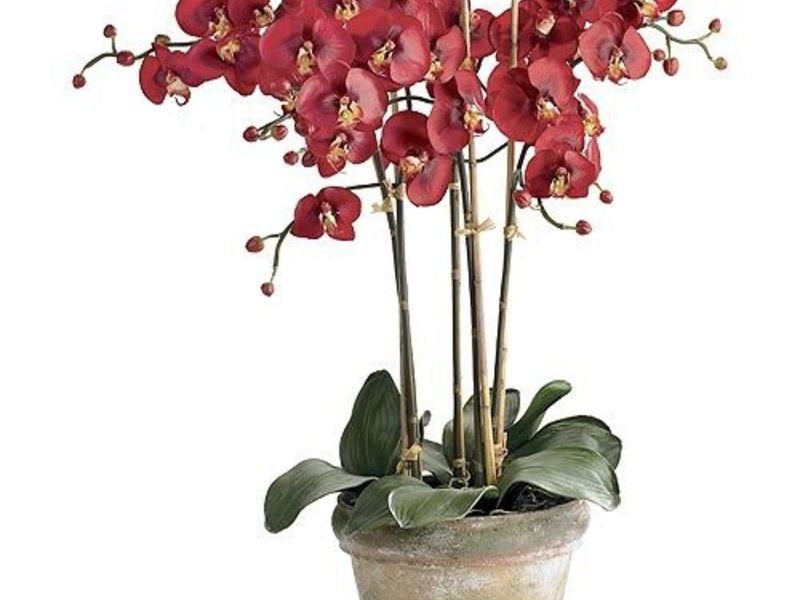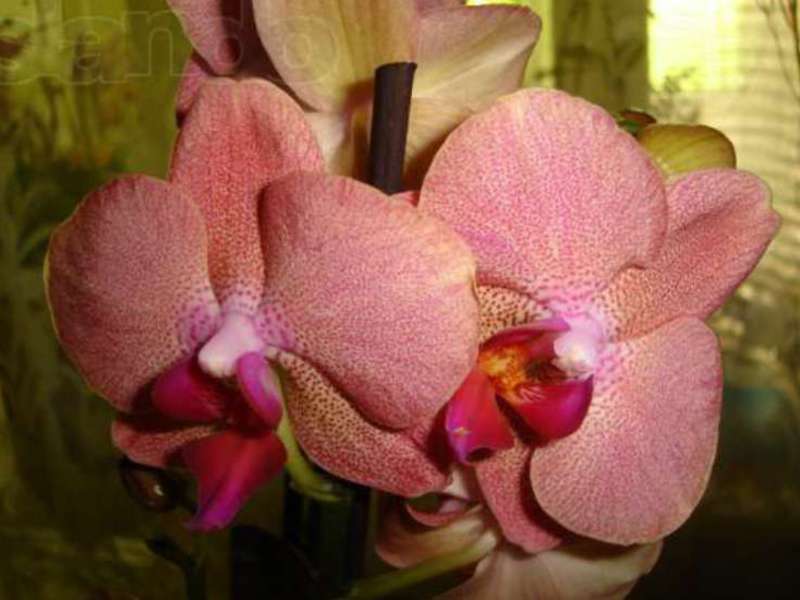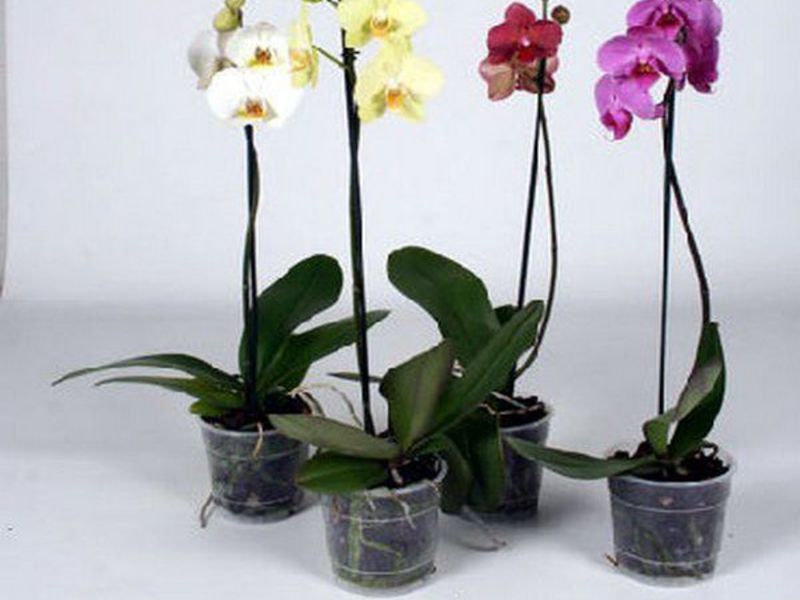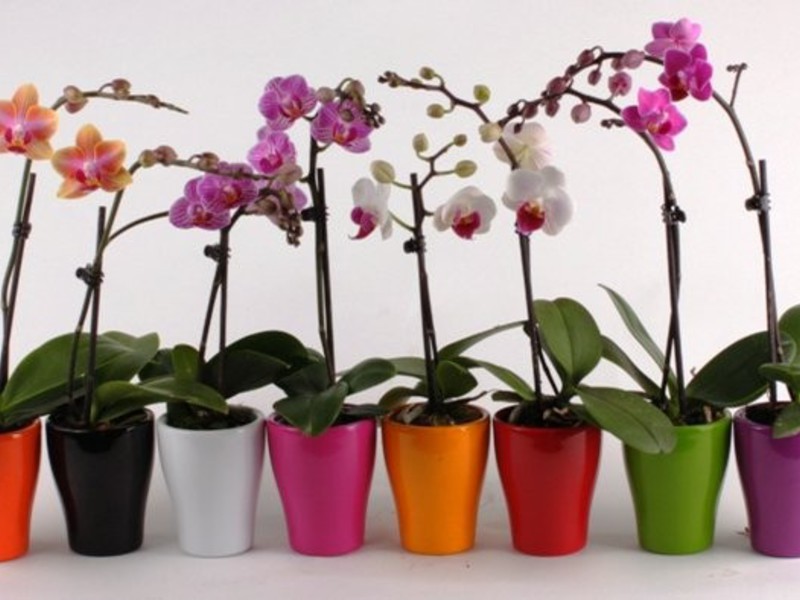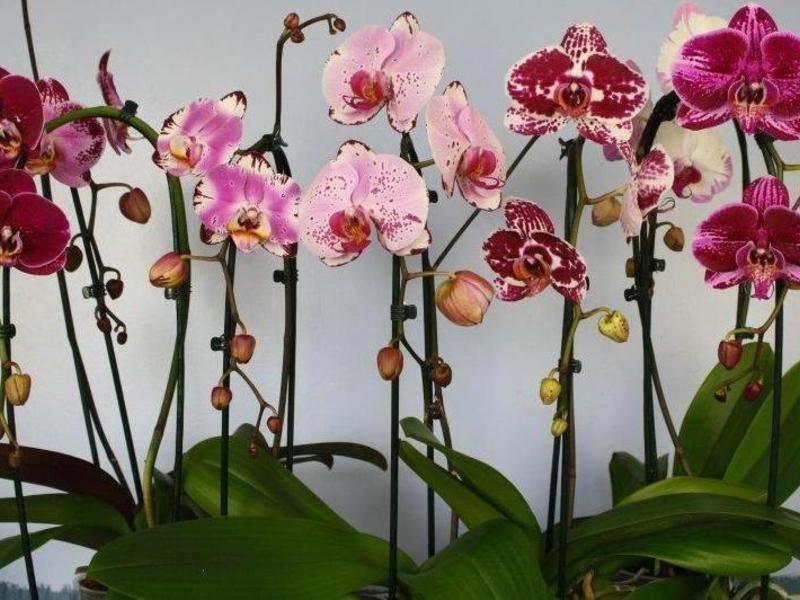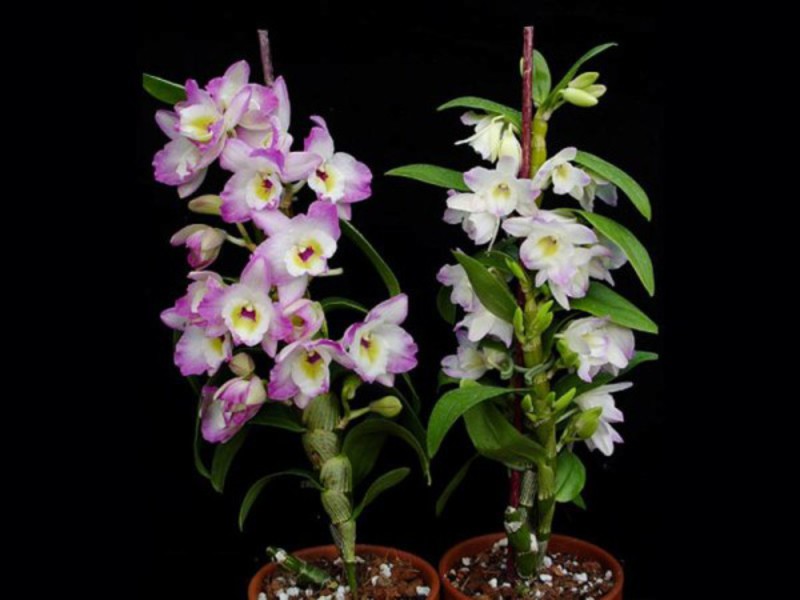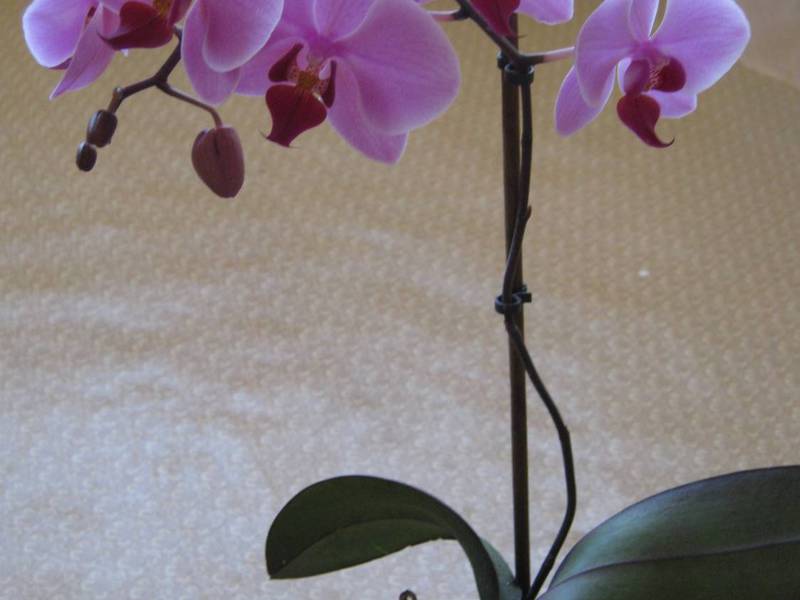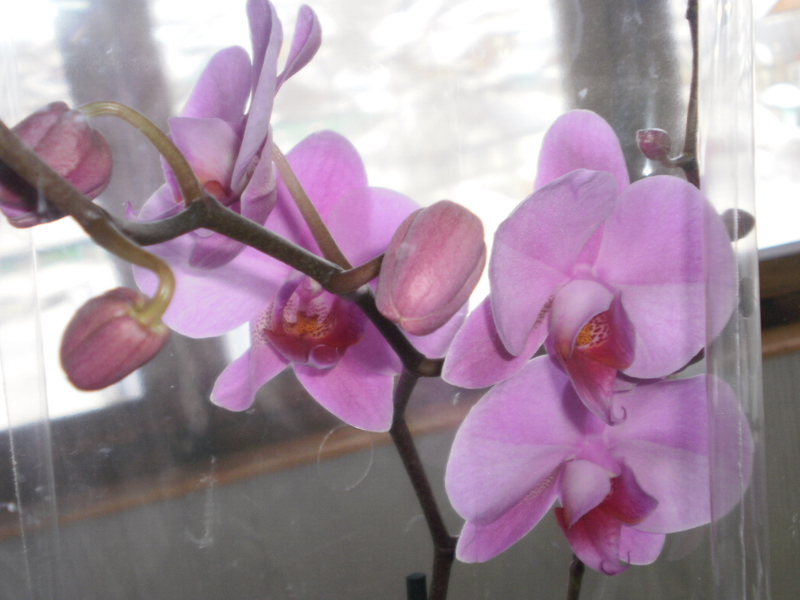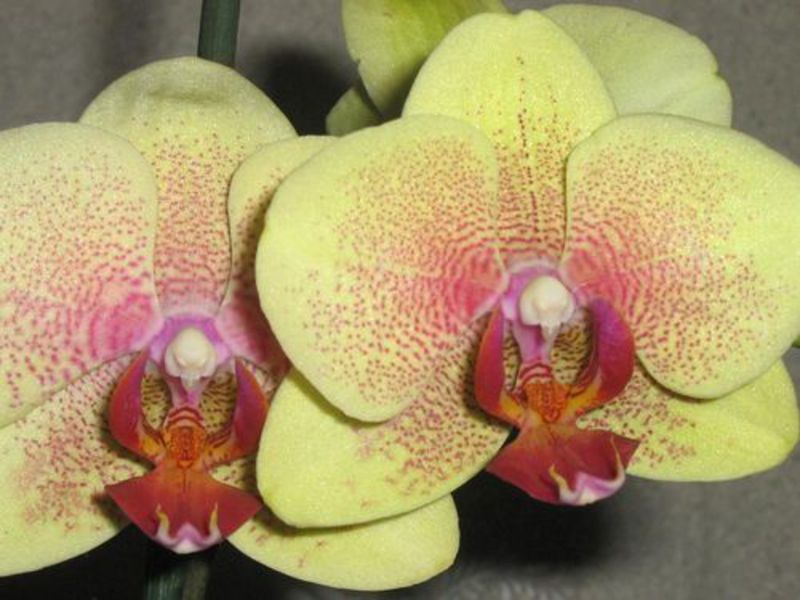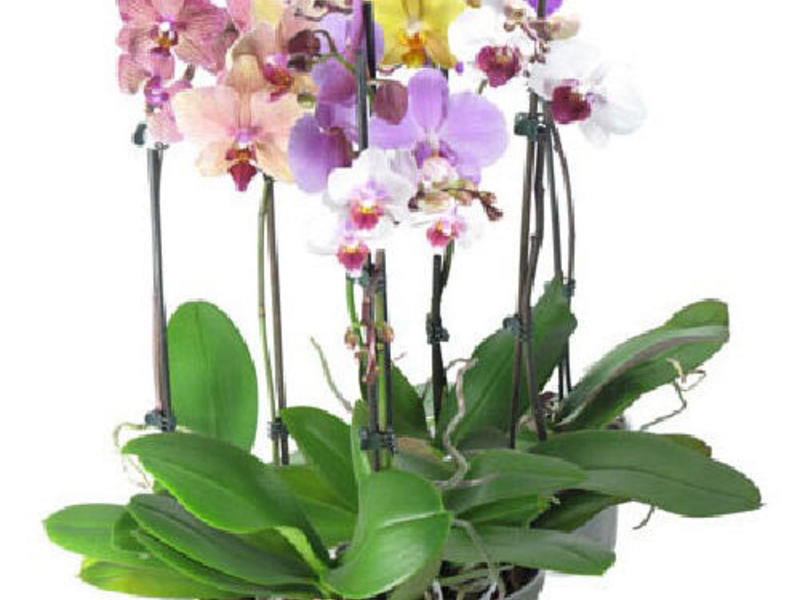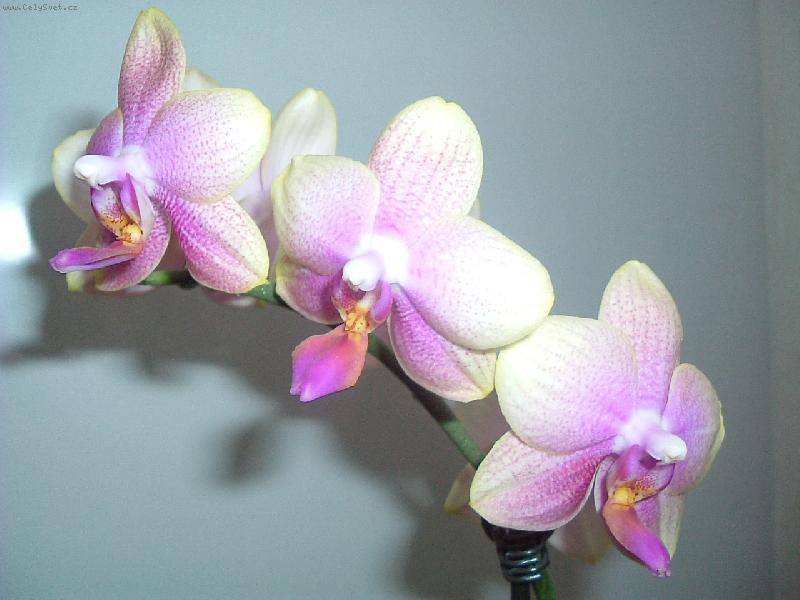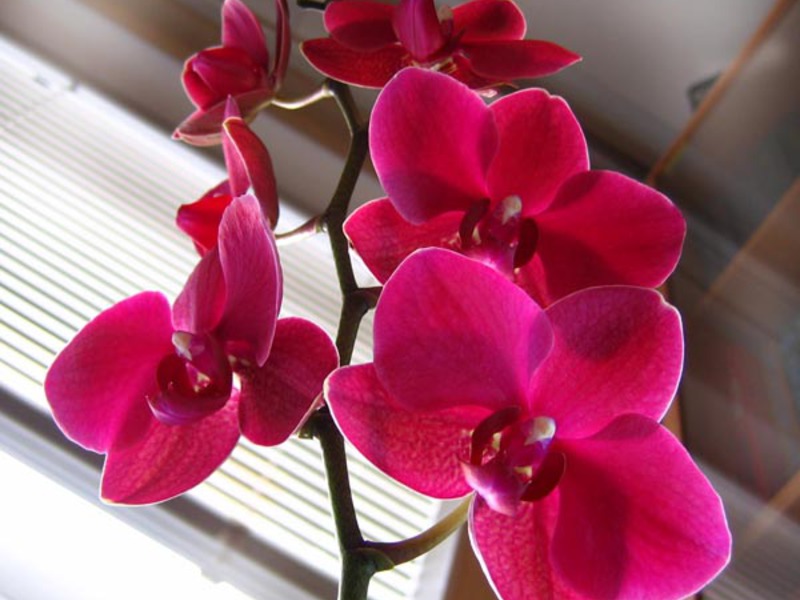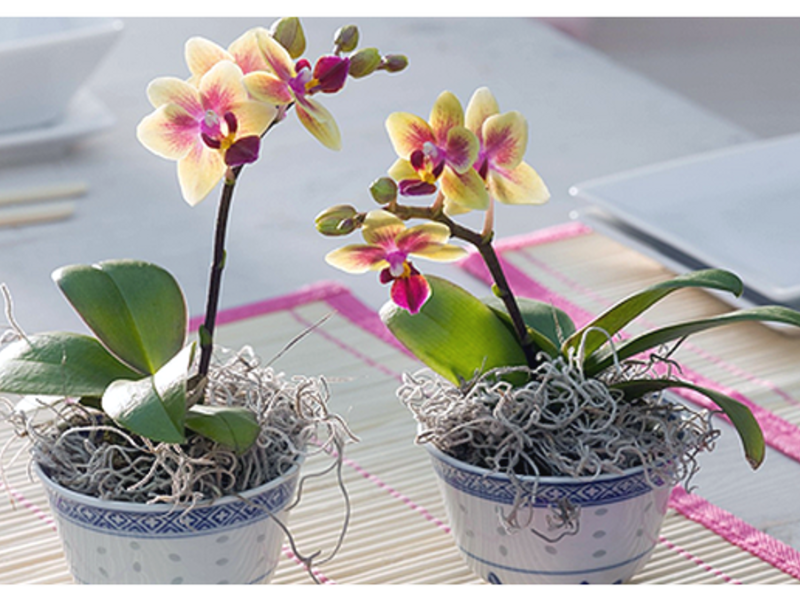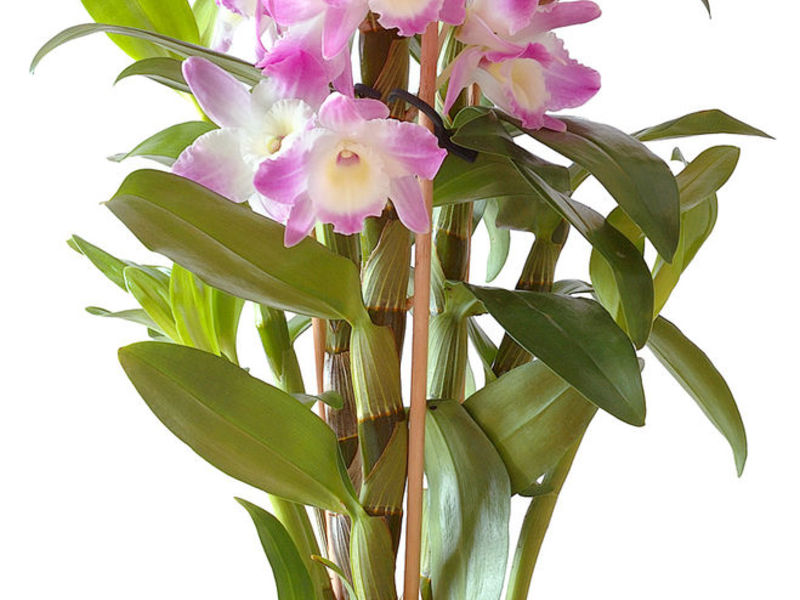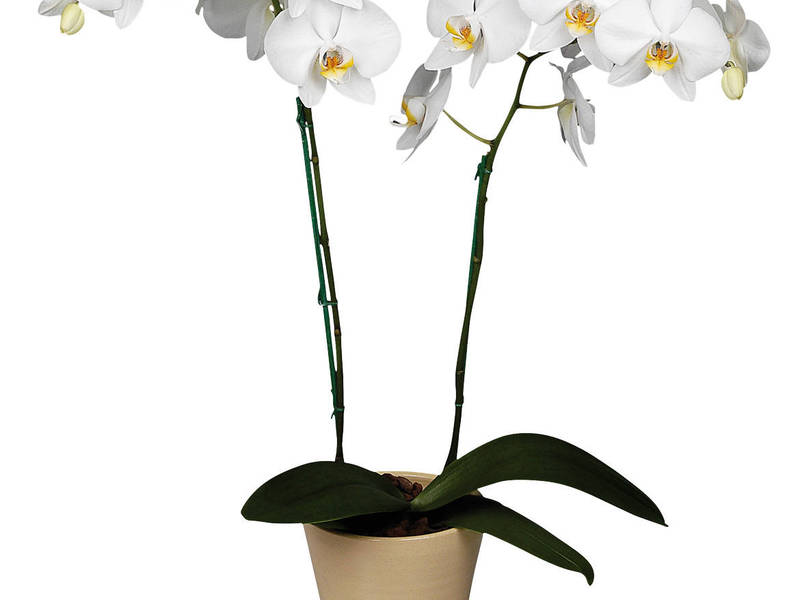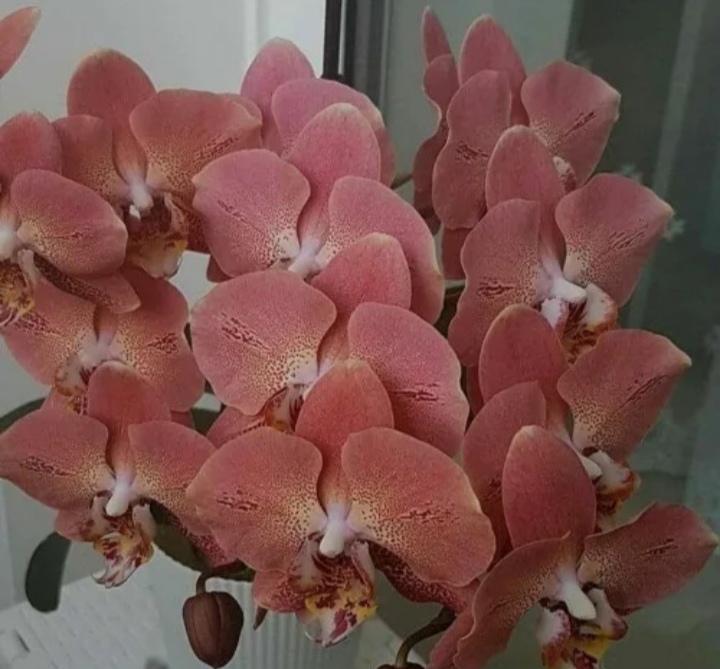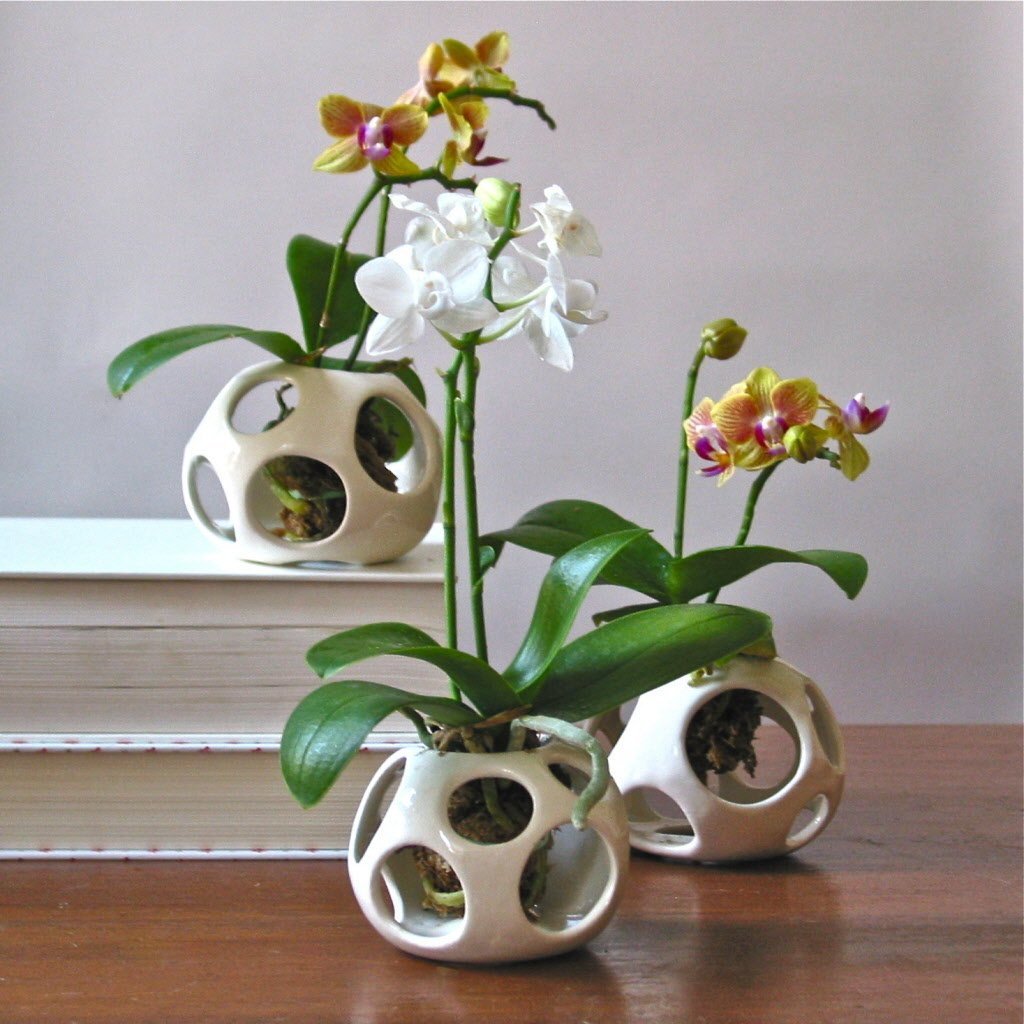Anyone who has noticed a uniquely beautiful orchid will undoubtedly stop to admire it, being blinded by the beauty of this flower. There are about 750 species of them, and about 30,000 hybrid models. And all of them, without exception, have their own characteristics. Plants are known for their gracefulness all over the world. They are attracted by the hot atmosphere with its significant dampness and temperature changes.
Content
Characteristic
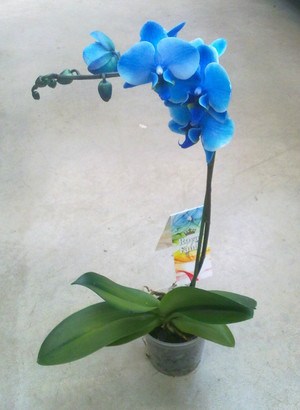 Phalaenopsis belongs to the genus Orchid. The orchid, as an independent species, was first studied by the botanist Karl Ritter von Blumen in the distant 19th century. These plants are native to the damp plains and tall forests of Northern Australia, the Philippines and South Asia. The distinctive features of these flowers can be revealed by their longish stem with four large leaves arranged in two rows.
Phalaenopsis belongs to the genus Orchid. The orchid, as an independent species, was first studied by the botanist Karl Ritter von Blumen in the distant 19th century. These plants are native to the damp plains and tall forests of Northern Australia, the Philippines and South Asia. The distinctive features of these flowers can be revealed by their longish stem with four large leaves arranged in two rows.
The plant got its name from two old words phalania opsis, meaning moths, since flowers of their own type resemble velvety butterflies. There are two main types of Phalaenopsis:
- simple (up to one meter long).
- miniature - do not overcome the barrier of 30 centimeters.
The trunk of the plant is perpendicular, often shortened, leaves are extensive, shiny and leathery. Plants that tend to branch often have large flower stalks with a huge number of leaves.
In good conditions, the life of a flower is usually up to 4 months, here, depending on the type of Phalaenopsis, and the presence of suitable conditions allows it to bloom 2-3 times a year.
Orchid varieties
The most unique and chic:
- Calypso bulbous;
- Wanda is blue;
- Cymbidium eburnum
- Odontoglossum is cordate;
- Habenaria radiata;
- Oncidium is beautiful;
Types of flowers
Exist the following types of orchids:
- Epiphytic - bloom high above the ground in the branches. Food is received in the form of the smallest particles of mineral and organic substances that are present in the air or accumulate in cracks in the bark.
- Lithophytic - grow in highlands on stones. Outer roots do not tolerate excessive moisture.
- Terrestrial - similar to a large number of domestic plants, are fixed by roots in the soil and take the necessary elements and water from it.
Phalaenopsis
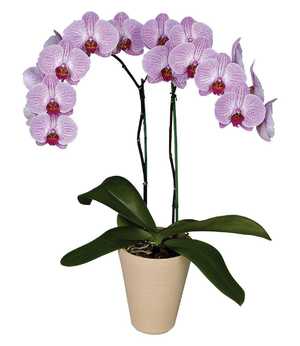 Phalaenopsis Schiller (Phalaenopsis chilleriana)... The only one of the most famous Phalaenopsis, which, by its own type, simply unites all "fans of love" for orchids. Schiller's Phalaenopsis contains very fascinating multi-colored leaves that differ in the spray on top. A very unexpected difference in this family is the large number of colors in one peduncle. There was even a case when this figure reached 174. Flowering lasts only a couple of months, but several times a year.
Phalaenopsis Schiller (Phalaenopsis chilleriana)... The only one of the most famous Phalaenopsis, which, by its own type, simply unites all "fans of love" for orchids. Schiller's Phalaenopsis contains very fascinating multi-colored leaves that differ in the spray on top. A very unexpected difference in this family is the large number of colors in one peduncle. There was even a case when this figure reached 174. Flowering lasts only a couple of months, but several times a year.
Phalaenopsis amabilis (Phalaenopsis amabilis) , another name - Phalaenopsis Attractive. It differs from its counterparts in that it has large inflorescences, with twisting branches, on which, as a rule, 15-20 flowers grow, their diameter reaches 11 cm.The tone in most cases is snow-white, with yellow or pink-purple color of flower petals ...Sometimes you will be able to catch an incomparably attractive scent emanating from this flower.
Phalaenopsis Stuartiana... In single features, it contains a very large number of similarities with Schiller's Phalaenopsis. The flower was born in the land of seven thousand islands. The peduncle differs in that it has a special image on the flowers and branches bent in different directions. Snow-white color with reddish specks at the source of the sepals. Amber-gold purple lip color. The sizes of the flowers are not impressive. This plant blooms in autumn and spring.
Phalaenopsis lueddemanniana... This is a beautiful type that blooms at any time of the year, but has its apogee in its bloom in winter from December to March. Peduncles are considered small, as they are arranged together with up to 7 small flowers that bloom in turn. The closer to the center, the brighter the shades. Snow-white flowers with pink-purple and yellow tints are difficult to confuse. There is only one difference - a very chic smell.
Phalaenopsis rosea (Phalaenopsis rosea)... The only one of the smallest types. In the tropics, such elegance generally begins to increase off the banks of rivers. A small peduncle, as a rule, is decorated with 15-20 small flowers, which open alternately in a snow-white-pinkish color. Sepals are elongated and iridescent, with snow-white sheer stripes, with three lobes, the tone of which gently shimmers from red to darkish pink-purple.
Phalaenopsis sandera (Phalaenopsis sanderiana)... It is the rarest and most expensive of the Phalaenopsis. The name of this type will help you remember the name of the famous gardener and big lover of orchids - Sander. Leaves are dark green with a multi-colored pattern. Peduncles, as a rule, are large, looking down to the ground, in opposite order, which are usually located in 50 flowers, with a diameter of 5-7 cm.
Horse Phalaenopsis (Phalaenopsis equestris)... The most optimal type of Phalaenopsis in order to popularize this type, for those who are considered admirers of dark-lilac and pink-purple tones, since directly increasing the contrast of one tone is of interest to various connoisseurs of this plant. The peduncle increases over time and lengthens with a period.
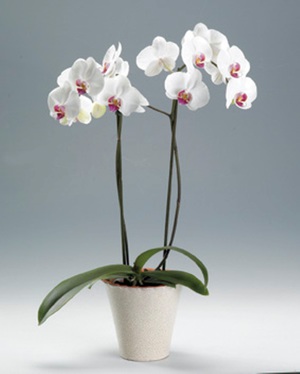 Phalaenopsis giant (Phalaenopsis gigantea)... A very unique type of its kind. Obviously by name, he is considered the largest of his comrades from the Phalaenopsis family. Periodically, he is called the most beautiful. He acquired the name of the giant due to his massive leaves, the volume of which reached 90 cm in length. The species is used in most cases for the purpose of crossing. The tone is milky cream, yellow and greenish yellow, with prominent dark brown and specks or strokes. Given the gigantic size of the flower, we can say that it is not adapted to home conditions, but it will perfectly decorate any greenhouse with its peculiarity.
Phalaenopsis giant (Phalaenopsis gigantea)... A very unique type of its kind. Obviously by name, he is considered the largest of his comrades from the Phalaenopsis family. Periodically, he is called the most beautiful. He acquired the name of the giant due to his massive leaves, the volume of which reached 90 cm in length. The species is used in most cases for the purpose of crossing. The tone is milky cream, yellow and greenish yellow, with prominent dark brown and specks or strokes. Given the gigantic size of the flower, we can say that it is not adapted to home conditions, but it will perfectly decorate any greenhouse with its peculiarity.
Room
The following orchids can be grown at home.
Brassia ( Brassia )
Its filamentous petals and sepals give it the most creative outdoor type of flowers. It is also called the spider orchid. The flowers are dull green, within 10 cm in size, with exquisite inflorescences. This plant has a sweet smell, or due to its individual taste it may seem unpleasant. The main flowering time is spring.
Cambria
It grows only in a closed environment, so it cannot be found outdoors. The flower combines a generic admixture of three families of orchids, called Vuylstekear. Its strong flowers have a different shape and volume, and large peduncles need help. The best place for growing this plant for the purpose of flowering is the windowsill.
Cattleya ( Cattleya )
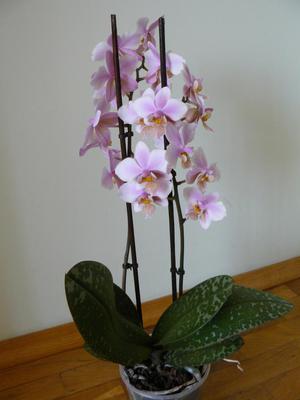 Cattleya has beautiful transparent waxy flowers with a wavy, painted lip. These giant plants are from absolutely all types of domestic orchids, but there are also small ones among them.There are many varieties, as well as their varied palette of colors. To grow them in a room, hybrid types are best suited as they are easier to grow than others. Flowering lasts approximately three months from spring to autumn.
Cattleya has beautiful transparent waxy flowers with a wavy, painted lip. These giant plants are from absolutely all types of domestic orchids, but there are also small ones among them.There are many varieties, as well as their varied palette of colors. To grow them in a room, hybrid types are best suited as they are easier to grow than others. Flowering lasts approximately three months from spring to autumn.
Cymbidium
Cymbidiums are quite large plants, but over time they have been replaced by small varieties with an extensive palette of colors grown at home. Small flowers are more tolerant of environmental conditions than other species.
Dendrobium ( Dendrobium )
At the present time, a large number of types of this flower family have been studied, having different volumes, colors and flower shapes. They bloom at any time of the year. Certain subtypes can flower at 10 ° C, while others require 16 ° C. Dendrobiums are usually evergreen, but they can shed their leaves after flowering.
Lycaste
The flowering of this flower increases in the summer season, at this time they need a constant temperature regime, abundant watering is required. It can be stored in winter, and when the flower blooms, it must be rearranged to a cooler place. Peduncles have yellowish flowers, located one by one, having a diameter of 20 cm.
Miltonia ( Miltonia )
Taking care of this plant is a rather difficult task, and it is better to grow it in greenhouses by specialists. They do not tolerate temperature changes and bloom better in cooler environments. At the moment, hybrid miltonia have been bred, which are less capricious.
Odontoglossum (Odontoglossum)
It takes a lot of effort to grow this flower. Since they grow mainly in the mountains, cool conditions are also required for their normal existence. They are best grown in living rooms. Low temperatures will only be a plus for hybrid species with striped petals.
Oncidium ( Oncidium )
These plants look very impressive, and in some ways they resemble butterflies. In order for the plant to begin to bloom, it is necessary to observe the humidity of the room, and rid them of abundant sunlight. The flowers resemble a five-leafed leaf, from maroon to greenish flowers.
Phalaenopsis
Their sizes reach up to a meter, but there are also species that are so small that they cannot reach even ten centimeters. But the most important thing is, of course, the flower. Its shape is at the same time unusual and attractive. Some people even compare it to a fairy-tale drawing, which in this case looks like a fluttering moth, a small hummingbird, or a dancing man. Inflorescences consist of two or three peduncles in most of these flowers.
Caring for a home orchid during flowering
For long-term and abundant flowering, a indoor flower must create certain conditions:
 An intense, humid climate is important for the plant. Watering must be done with warm water of 35 degrees.
An intense, humid climate is important for the plant. Watering must be done with warm water of 35 degrees.- For a flowering plant, the temperature at night should be 5 degrees higher.
- You cannot transplant an indoor orchid when it has already started flowering.
- In order for the plant to retain its unique color, it is necessary to increase the feeding during flowering.
The choice of a unique species takes quite a long time. A variety of leaf models, names, colors will help everyone to choose a flower to their liking. No wonder this plant is a symbol of aristocracy and wisdom. Orchids represent peace of mind, love, beauty and homeliness.

